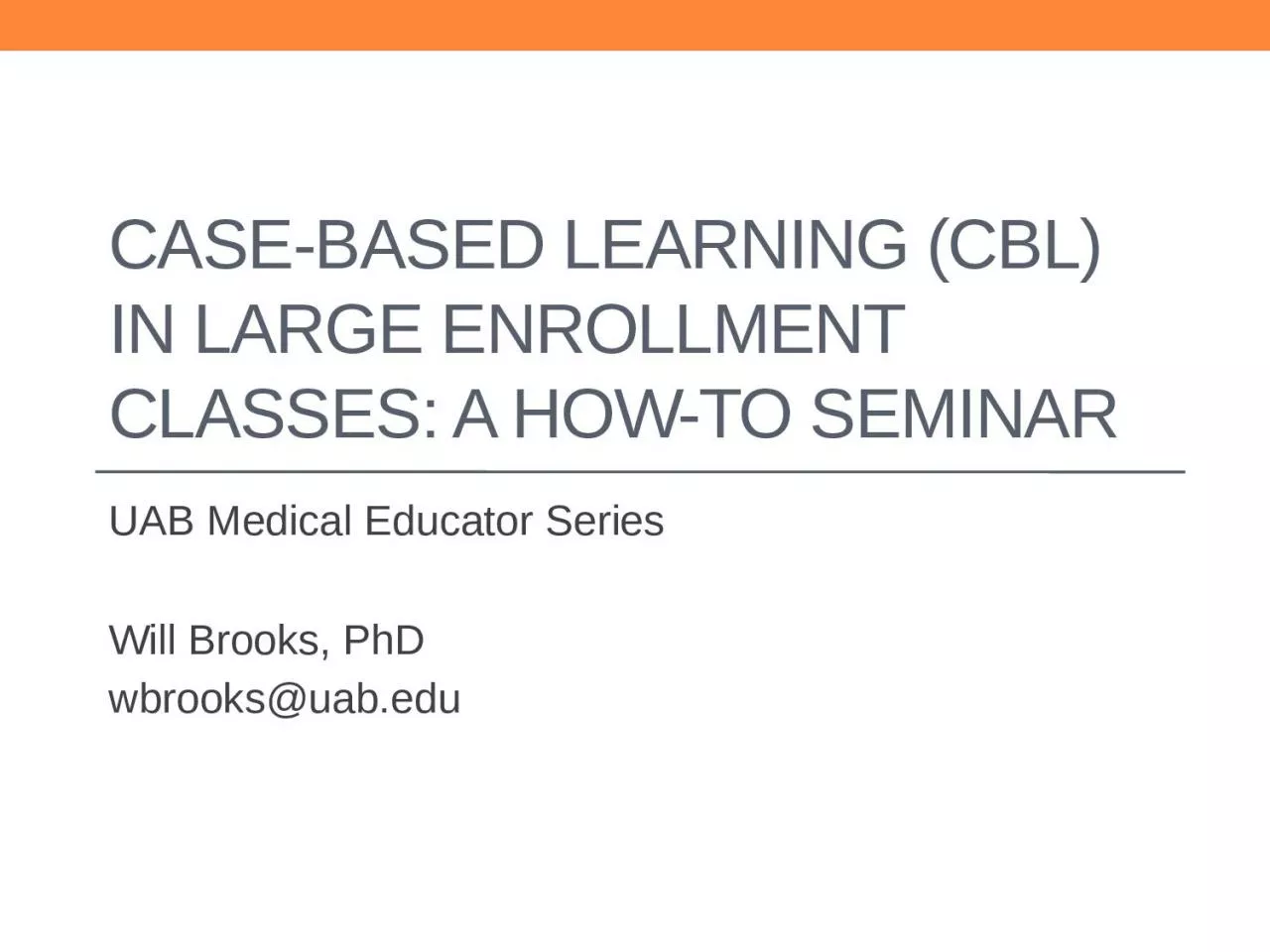

UAB Medical Educator Series Will Brooks PhD wbrooksuabedu What is CBL Using a casebased approach engages students in discussion of specific situations typically realworld examples This method is learnercentered and involves intense interaction between the participants CBL focuses on th ID: 1024674
Download Presentation The PPT/PDF document "Case-based learning (CBL) in Large enrol..." is the property of its rightful owner. Permission is granted to download and print the materials on this web site for personal, non-commercial use only, and to display it on your personal computer provided you do not modify the materials and that you retain all copyright notices contained in the materials. By downloading content from our website, you accept the terms of this agreement.
1. Case-based learning (CBL) in Large enrollment classes: A how-to SeminarUAB Medical Educator SeriesWill Brooks, PhDwbrooks@uab.edu
2. What is CBL?Using a case-based approach engages students in discussion of specific situations, typically real-world examples. This method is learner-centered and involves intense interaction between the participants. CBL focuses on the building of knowledge, and the group works together to examine the case. The instructor’s role is that of a facilitator, and the students collaboratively address problems from a perspective that requires analysis. Much of CBL involves learners striving to resolve questions that have no single right answer. (Queen’s University, 2011)
3. History of CBLHarvardLaw school adopted case method in 1870Harvard Business School adopted across curriculum in 1920Still in use today at bothWidely used in varying disciplines across the countryMedicineHealth professionsBusinessLawEducationAlso known as: case method, case study method
4. General Features of CBLBased on specific learning objectivesOften higher level Bloom’s TaxonomyUses complex, real-world, clinical cases to provide students the opportunity to:Apply knowledgeCritically analyze dataEvaluate decisionsDesign alternative solutions
5. General Features of CBLRooted in Constructivist Learning TheoryPre-class preparation In-class active discussion
6. CBL CasesCases should:Be authenticInvolve common scenariosTell a storyBe aligned with learning objectives/outcomesHave educational valueStimulate interestCreate empathy with the charactersInclude quotations in character voice to create drama and realismHave general applicability
7. Forms of CBLSmall group CBL1 facilitator + small group of students (<12)Large group CBL1 facilitator + large group of students (12 - 100+)Individual or team
8. Harvard Business School Case Method
9. We’re Just Wasting Our Time
10. Large Group CBLOpen with a warm callAsk a combination of focused and open-ended questions to guide discussion toward learning objectivesUse board/PPT to keep track of “pastures”Explore objectives fully, sum-up, move onEnd with resolution…what actually happened…may not have been the best resolution!
11. ResourcesThe effectiveness of case-based learning in health professional education. A BEME systematic review: BEME Guide No. 23. Medical Teacher 2012.Christensen Center for Teaching & Learning http://www.hbs.edu/teaching/resources/Pages/default.aspxElements of Effective Class ParticipationCharacteristics of Effective Case TeachingQuestions for Class Discussion